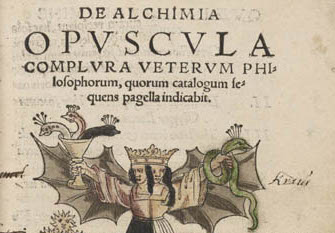Book of Secrets: Alchemy and the European Imagination, 1500-2000
Texts demonstrating the extraordinary presence of alchemy in European popular culture.

“I have no Knowledge of it at all,” wrote Ezra Stiles of alchemy. “I never saw Transmutation, the aurific Powder, nor the Philosophers Stone,” the early President of Yale College continued, “nor did I ever converse with an Adept knowing him to be such. … I never had, or made an Experiment with, a Furnace or Alembic in all my Life. I am not versed in the Books of the Adepts; I have seen but few of those Authors, & read less—perhaps all the little I have read collectively would not equal an Octavo Volume.”
In his ability to discuss at length how little he knew about alchemy, Stiles was a characteristic reader of early modern European alchemical literature. By 1777, when Stiles was writing, alchemy was a commonplace of British and European popular culture. From the sixteenth century, books of alchemical secrets were published in almost every European language, and were bought, read, annotated, mocked, discussed, and collected by an audience of skeptics and believers alike. Terms such as the philosopher’s stone entered into the popular understanding, as did the names of alchemical authorities such as Raymond Lull.
The Yale University Library collections of alchemical literature reflect the continuing presence of alchemical works in any well-furnished library, from the first donations of the alchemically inclined Bishop George Berkeley to a fledgling Connecticut college, to the gift to Yale in 1965 of Mary Conover Mellon’s collection of alchemical books and manuscripts.
Read more about alchemy at the Early Modern at the Beinecke blog.
The Exhibition
Many of the items available here are drawn from the exhibition Book of Secrets: Alchemy and the European Imagination, 1500-2000, January 20 - April 18, 2009, at the Beinecke Library.